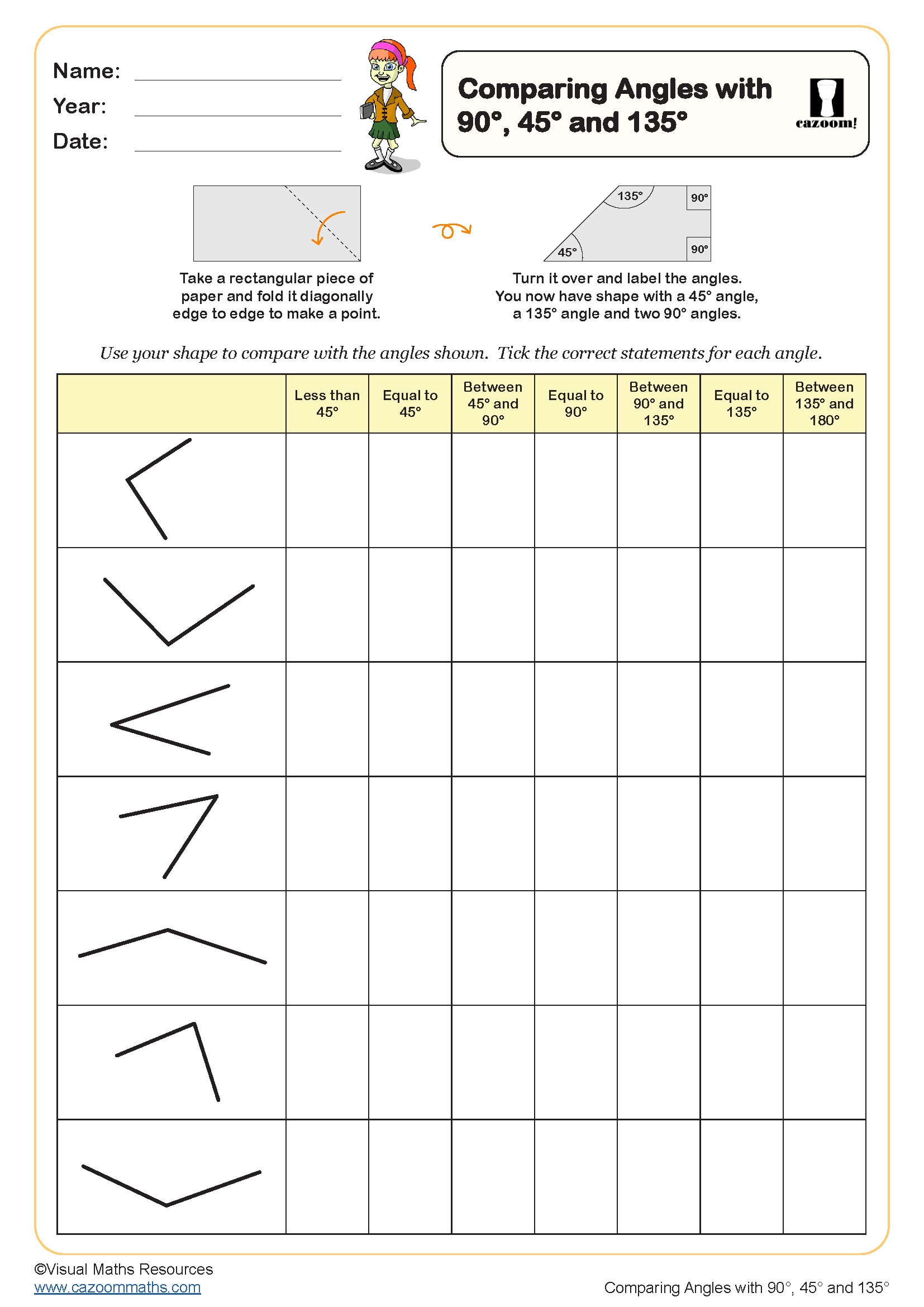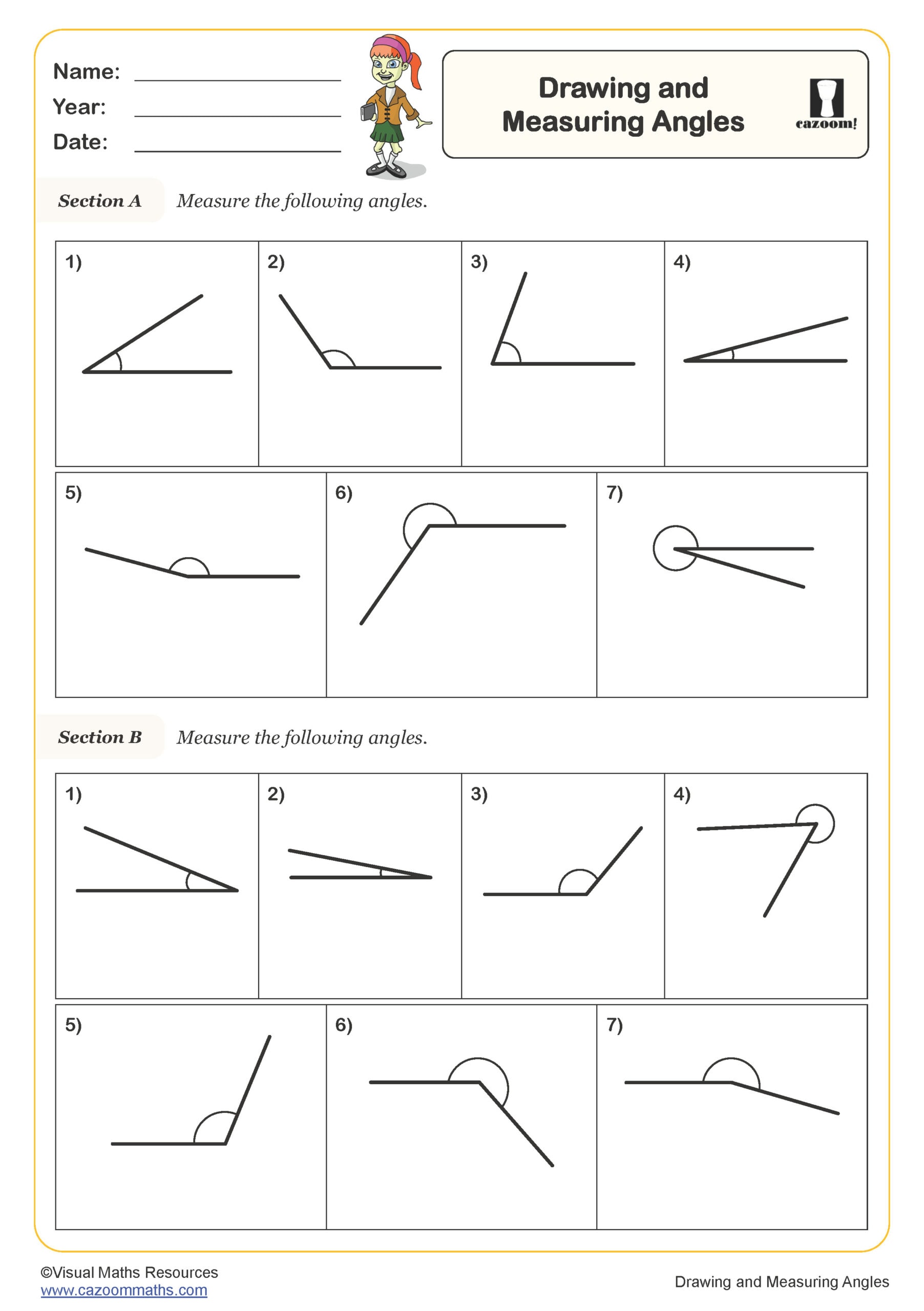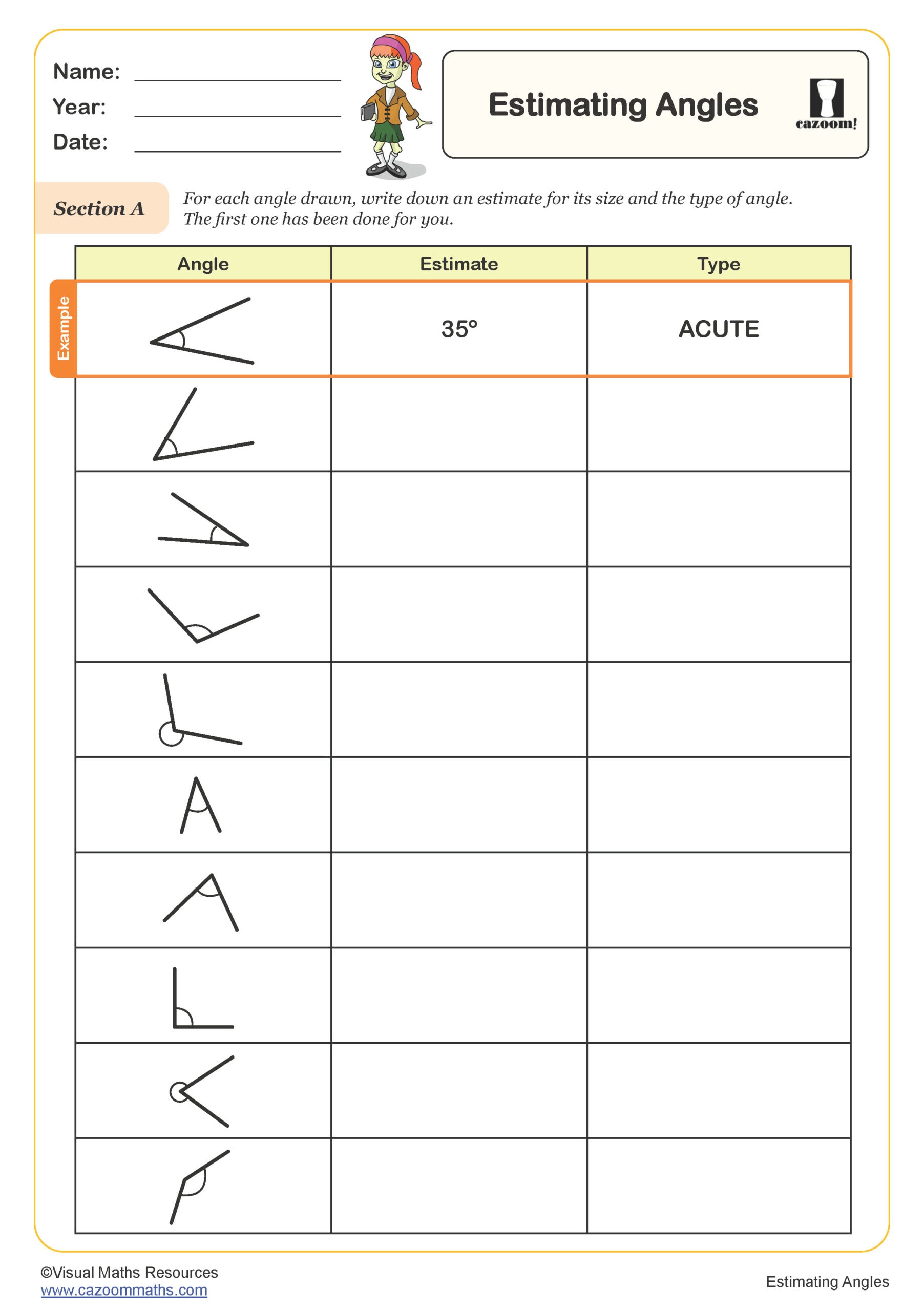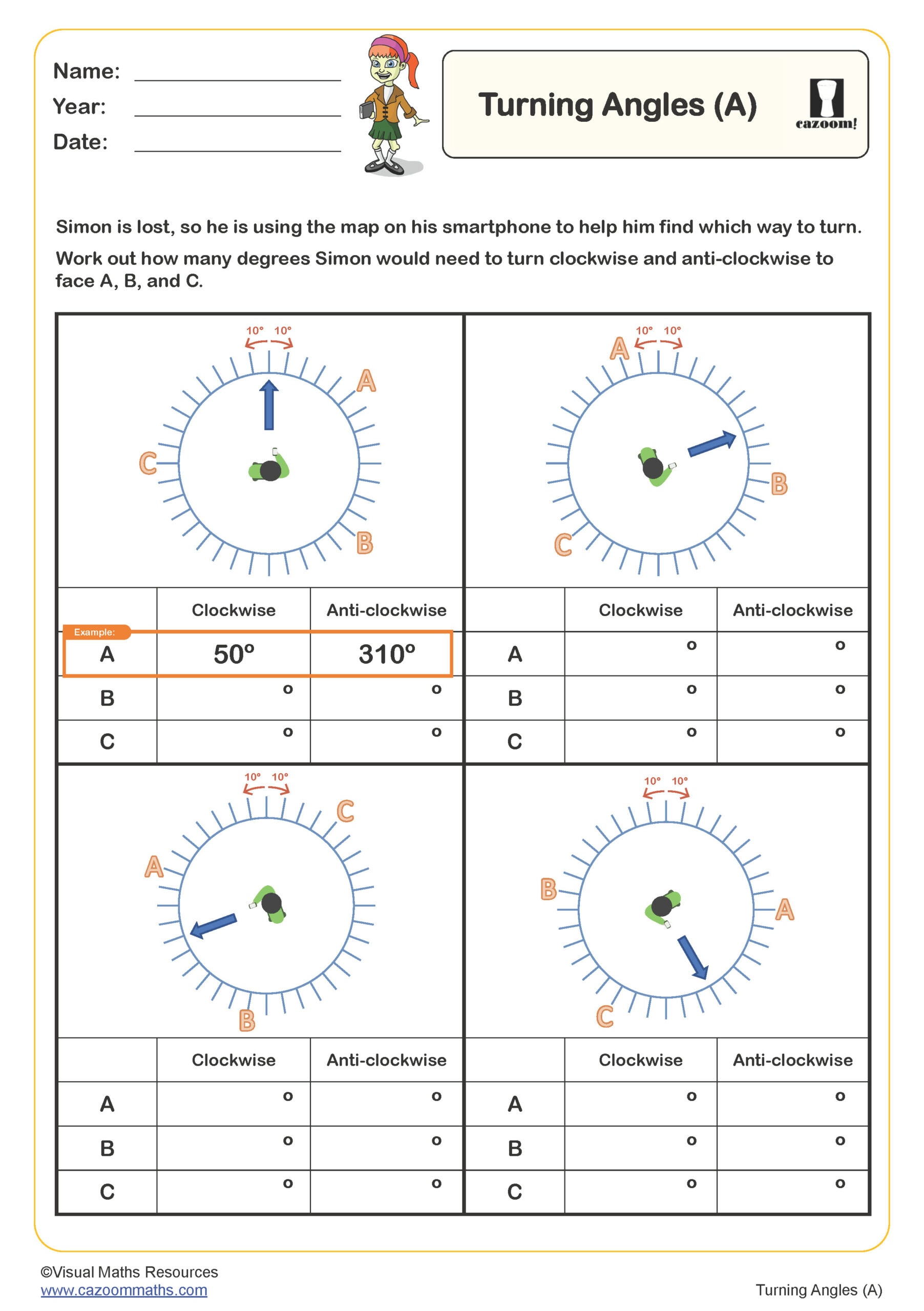Year 5 Angles Worksheets
Year 5 Measure and Classify Angles Worksheets with Answer Keys
Quality angle resources that actually challenge KS3 students without overwhelming them are really hard to find. Our Year 5 ready-to-use, printable PDF worksheets focus on the essential skills students need related to basic coordinate skills. Each worksheet comes with detailed solutions that show the complete working process, helping your primary school students understand the reasoning behind each answer.
How to Identify Different Types of Angles in Year 5 Geometry
We've packed quite a lot into these angle worksheets! Students progress from basic angle identification to more complex tasks like calculating angles on straight lines and around points. The protractor activities are particularly popular with students – they love the hands-on measuring practice. We've included exercises on triangles, quadrilaterals, and polygon angles, plus plenty of real-world angle problems that actually make sense to 9 and 10-year-olds.
Building Year 5 Students' Confidence with Angle Measurement Practice
Students who practice with our angle worksheets perform significantly better in geometry assessments. The visual nature of angle work means students need plenty of opportunities to develop their spatial reasoning skills. These worksheets bridge that crucial gap between understanding angle concepts and applying them confidently in SATS and classroom tests.
Key benefits our students experience:
• Improved protractor accuracy and measurement skills
• Better understanding of angle relationships in shapes
• Increased confidence with geometry problem-solving
• Stronger foundation for KS3 mathematics topics
• Enhanced spatial awareness for real-world applications
Where Year 5 Students Actually Use Angle Knowledge Daily
The basic geometry skills related to angle knowledge appear everywhere! In design and technology lessons, students use angles when creating structures and mechanisms. During PE, understanding angles helps with sports techniques and movement analysis. Even in art lessons, perspective drawing relies heavily on angle relationships. It's actually quite satisfying when students start spotting angles in architecture, road signs, and everyday objects around them.
Common real-world angle applications:
• Architecture and building design projects
• Sports techniques and trajectory analysis
• Art perspective and technical drawing skills
• Navigation and map-reading activities
• Engineering and construction understanding
• Photography composition and camera angles




